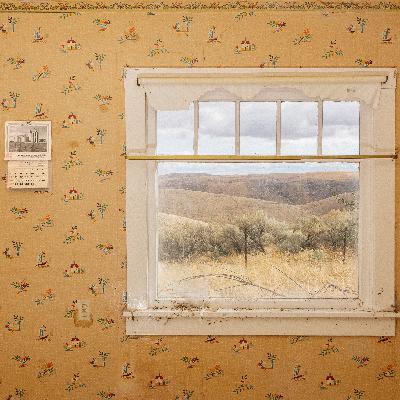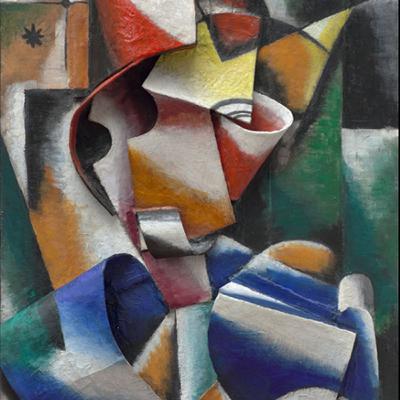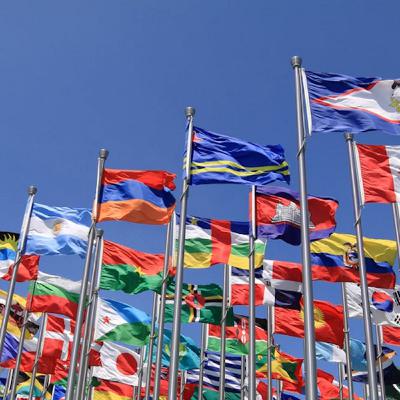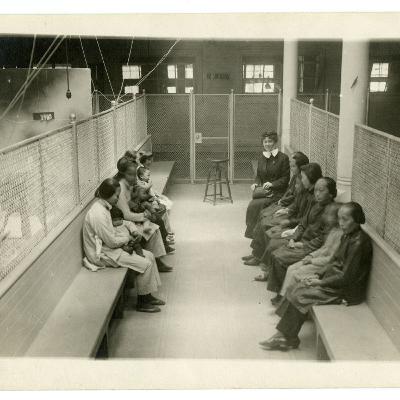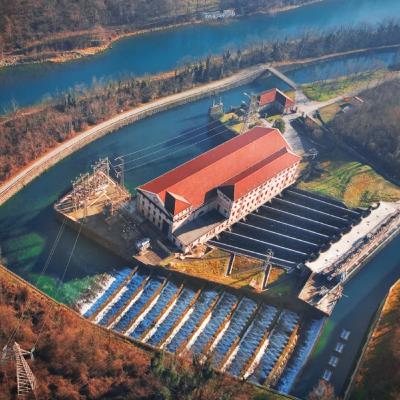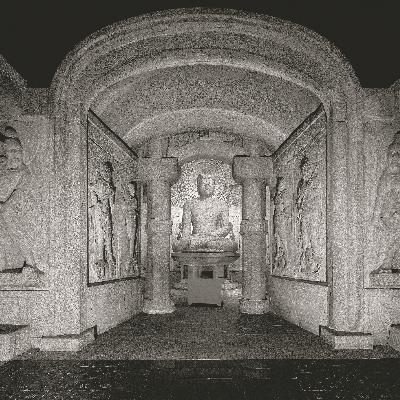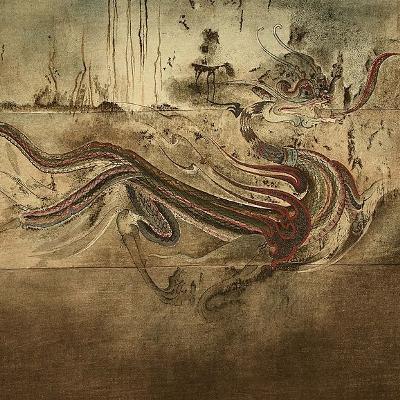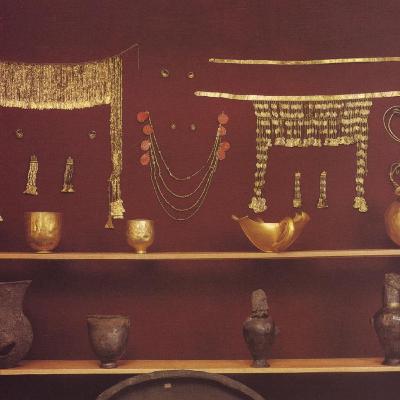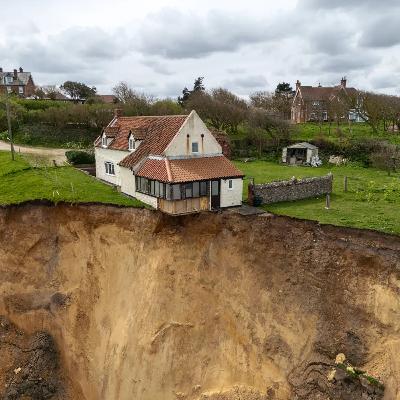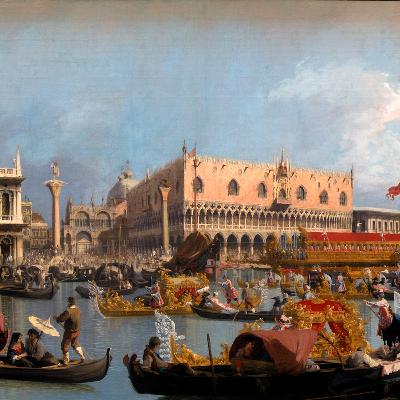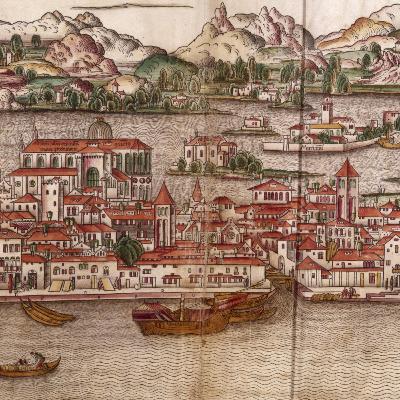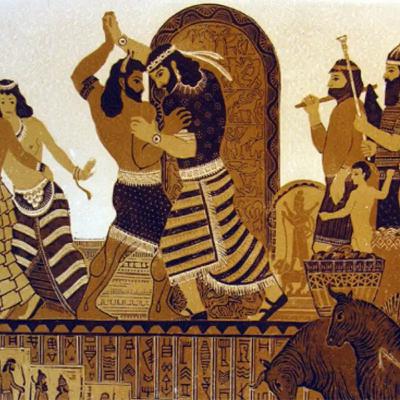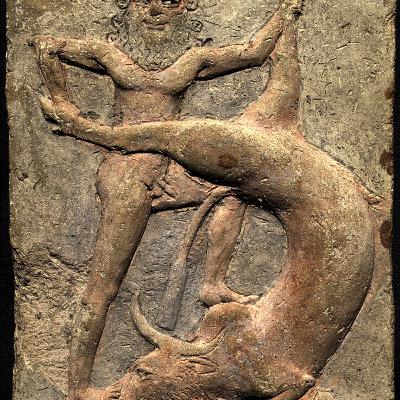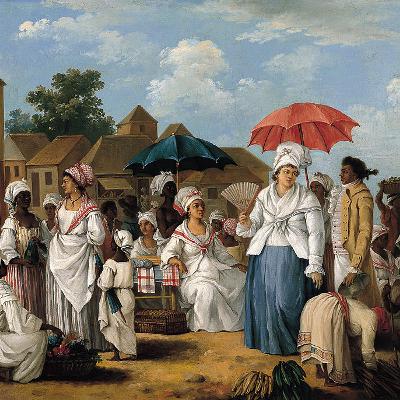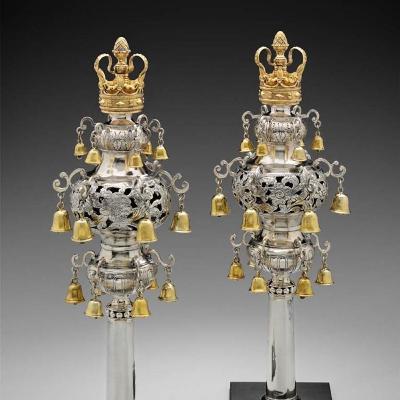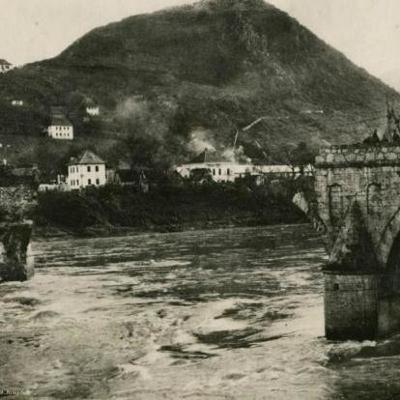Discover historiansplaining podcast
historiansplaining podcast
121 Episodes
Reverse
We read ghost-related poems by Henry Wadsworth Longfellow, Lola Haskins, & Stanley Plumly, as a thank-you to patrons and a meditation on the field of history.Most of my recent apperance on the Katie Halper show can be seen on youtube, beginning about here: https://youtu.be/aScGDE4CuHk?t=4398Image: photograph from photobook, "Epitaph," by Brendon Burton
We follow how a remote landmass on the far western fringe of Europe became the home of a lasting Gaelic civilization and a major center of classical and Christian knowledge, before coming under attack by Viking raiders and Anglo-Norman invaders. We examine the English Crown’s shifting and increasingly desperate strategies to control Ireland, and the long battle over control of land and religion before Ireland was finally subjected to Protestant domination following the Glorious Revolution.Recommended further reading: Cronin, “A History of Ireland”; Foster, ed., “The Oxford Illustrated History of Ireland”; Ranelagh, “A Short History of Ireland”; Roberson, “The Irish Ice Sheet,” <https://www.antarcticglaciers.org/glacial-geology/british-irish-ice-sheet/the-irish-ice-sheet/>Music: “Danse du Grand Calumet de la Paix” / “Forets Paisibles,” from the opera-ballet “Les Indes Galantes,” by Jean-Philippe Rameau & Louis Fuzelier, 1735, performed by Les Arts Florissants, with vocalists Patricia Petibon & Nicolas Rivenq -- used with the kind authorization of Les Arts FlorissantsImage: Lavabo, Mellifont Abbey, Ireland
For patrons and Patreon followers: Changes have happened with Patreon, new projects continue apace, and I try out a reading of T.S. Eliot’s “Portrait of a Lady.”The Interintellect platform: https://interintellect.com/Historiansplaining trouble-shooting page: https://historiansplaining.com/supporters-faq-and-trouble-shooting/Image: “Portrait of a Lady” by Lyubov Popova, 1915
Nations: What are they? Are they defined by language, by “culture,” by blood, or something else? How do you know if you are part of one? —and is everyone in the world a member of one nation or another?We follow how the rise of medieval kingdoms and universities and the print revolution made it possible for people in the West to imagine themselves as part of extended kinship groups united by a common language and ancestry, how these abstract “nations” differed from all earlier social groupings, how nations have developed a standard template for national history and mythology, and how since the French Revolution, “nationalism” has inspired the loyalties and fired the passions of millions.Finally, we consider how scholars and critics have torn the concept of the nation to shreds, and then have tried to account for the profound transformations in consciousness and time made it possible for people to conceive of themselves as belonging to nations in the first place.Apologies for the osprey squawking in the background of the lecture!Suggested further reading: B. Anderson, "Imagined Communities"; Ernest Renan, "Qu'est-ce qu'une nation?"; Grosby, "Nationalism: A Very Short Introduction"; Potter, "The Historian's Use of Nationalism and Vice Versa"Music: “Danse du Grand Calumet de la Paix” / “Forets Paisibles,” from the opera-ballet “Les Indes Galantes,” by Jean-Philippe Rameau & Louis Fuzelier, 1735, performed by Les Arts Florissants, with vocalists Patricia Petibon & Nicolas Rivenq.
We examine the roots of the American practice of "deportation" -- from colonial banishment of heretics, through the political upheaval over Alien & Sedition Acts, to the age of Chinese Exclusion -- which paved the way for the federal government to exercise virtually unlimited & absolute power over aliens, whom they placed outside the protection of the Constitution.Suggested further reading: Kanstroom, "Deportation Nation: Outsiders in American History"Image: East Asian women & children in a holding cell, Angel Island immigration station, California, ca. 1920
We follow the paths by which the bishops of Rome – leaders of what had been a small church on the fringe of the Christian world – established themselves as the foremost spiritual leaders of Western Christendom and with time, as supreme heads of the global Catholic Church. We follow the dramatic turns in the Papacy’s fortunes, as Popes alternate between pinnacles of power and prestige, commanding lands and armies, launching Crusades and outwitting emperors, and extreme lows of feebleness and humiliation, overruled by councils and overthrown by foreign kings. We consider how the Papacy made use of the Renaissance and struggled to respond to the Protestant Reformation—before examining the history of the modern Papacy and the more recent Popes for Part 2.Please sign up, at any level, to support the podcast and hear patron-only lectures! -- www.patreon.com/c/user?u=5530632Suggested further reading: Norwich, “Absolute Monarchs : A History of the Papacy”; La Due, “The Chair of Saint Peter : A History of the Papacy”Image: Holy Roman Emperor Frederick Barbarossa, offering submission to Pope Alexander III, as part of Treaty of Venice, 1177, as depcited in a fresco in Palazzo Pubblico, Siena, by Spinello Aretino, ca. 1407
Update for listeners, and happy Father's Day wishes; excerpt from latest patron-only lecture on Italy between unification and the entry into the First World War.Please sign up on Patreon to hear the latest lecture and all patron-only materials! -- www.patreon.com/posts/italy-nation-war-131082248Podcast website: www.historiansplaining.comImage: The Paderno D'Adda hydroelectric power plant, Lombardy, 1895-8Music: "Nel Blu, Dipinto di Blu" / "Volare," by Domenico Modugno
We follow Korea's thousand-year struggle to maintain its integrity and independence, fending off cataclysmic invasions by the Mongols, the Manchus, and the samurai of Japan, and repeatedly transforming itself -- from a confederation of Buddhist warrior-nobles, to a strictly Confucian surveillance state, to a fledgling modern industrial nation -- before finally falling to Meiji Japan.Suggested reading: Han Woo-Keun, “The History of Korea”; Michael J. Seth, “A History of Korea” & “A Brief History of Korea”; Takashi Hatada, “A History of Korea”; Ki-Baek Lee, “A New History of Korea”Image: Seokguram Grotto, outside Gyeongju, late 700s
We examine the origins of the Korean people and state – from prehistoric migrations and technological revolutions, through the formation of warrior confederations, the rise and fall of the Chinese colony, the tumult and intrigue of the “Three Kingdoms” era, and the arrival of Buddhism, and finally to the unification of most of Korea under the Silla kingdom.Suggested reading: Han Woo-Keun, “The History of Korea”; Michael J. Seth, “A History of Korea” & “A Brief History of Korea”; Takashi Hatada, “A History of Korea”; Ki-Baek Lee, “A New History of Korea”Map of approximate borders of Gojoseon, the first regional confederaton in Korea, ca. 200s BC, before takeover by Wiman: https://www.reddit.com/r/MapPorn/comments/rkauac/the_first_kingdom_of_korea/#lightboxMap of Korea during the Three-Kingdoms period ca. 500 AD, at the height of Koguryeo power: https://commons.wikimedia.org/wiki/File:Three_Kingdoms_of_Korea_Map-es.svgImage: wall mural depicting the Azure Dragon, embodying spring & the east, in a Goguryeo tomb
We journey through the different eras and incarnations of Troy as archaeologists have reconstructed them from the excavations at Hissarlik. We then explore the surviving evidence -- including linguistic theories, newly discovered tablets from the ancient Hittite capital, and the long-lost and rediscovered "Priam's Treasure" that Schliemann unearthed-- to form a picture of who the Trojans were and what sort of city they created in the Bronze Age world.Image: Gold jewels & vessels from "Priam's Treasure" as displayed at the Pushkin State Museum of Fine Arts, Moscow, 1990s.Music: "Les Cyclopes," by Rameau, performed by Paul Barton & published by FeurichFurther Reading: Tolstikov & Treister, “The Gold of Troy”; Allen, “Finding the Walls of Troy”; Traill, “Schliemann of Troy”; Moorehead, “Lost and Found: the 9,000 Treasures of Troy”; McCarty, “Troy: The Myth and Reality Behind the Epic Legend”; Gainsford, Kiwi Hellenist blog, “The Trojan War #3: Bronze Age Evidence,” https://kiwihellenist.blogspot.com/2016/09/the-trojan-war-3-bronze-age-evidence.html ; Fitton & Villing, British Museum blog, “The Search for the Lost City of Troy,” <https://www.britishmuseum.org/blog/search-lost-city-troy>
It is one of the foundational achievements of archaeology, and one of the most momentous discoveries ever made in any field --We follow the long debate over whether and where the remains of the ancient legendary city of Troy could be found, and we see how the mystery was solved by the excavations overseen by the brilliant, ruthless, and indefatigable German businessman, explorer, and serial liar, Heinrich Schliemann.Pt. 2 will examine how modern scholars and excavators have used the finds from the site in Turkey -- including the long lost priceless "Treasure of Priam" -- to reconstruct the city and its place in the Bronze-Age world.Music: "Les Cyclopes" by Jean-Philippe Rameau, played on piano by Paul Barton, and published by Feurich Piano.Image: Sophia Schliemann posing in a gold diadem, necklace, and earrings from Troy 2, dubbed "The Jewels of Helen," 1873-4.Suggested further reading: Tolstikov & Treister, “The Gold of Troy”; Allen, “Finding the Walls of Troy”; Traill, “Schliemann of Troy”; Moorehead, “Lost and Found: the 9,000 Treasures of Troy”
We use a recent controversial murder case as a way to reconsider recent world events--such as war in Europe and the return of Trump--from the perspective of the epistemological crisis and the decline of trust in Truth, Facts, and Reality.CHAPTERS:0:00:20 – Intro & Disclaimers0:11:45 – The Great Witch Hunt: overview0:28:25 – The Great Witch Hunt: midwives & caregivers0:45:10 – The Lucy Letby Case: narrative1:15:55 – The Lucy Letby Case: analysis1:44:10 – The Lucy Letby Case: reactions & aftermath1:51:25 – Defensiveness & the epistemic house of cards2:08:00 – The partisanization of knowledge2:20:40 – The trials of the expert class2:38:40 – Lessons of World War I2:46:30 – The threat to democracy is the presidency2:55:50 – The “economy”2:59:10 – Conclusions: Notre Dame restoredImage: 18th-century farmhouse on eroding cliff's edge, Trimingham, Norfolk, England, April 2024.Audio version of my 2022 article, "In the American Tempest: Democracy, Conspiracy, and Machine" -- https://soundcloud.com/historiansplaining/article-in-the-american-tempest-democracy-conspiracy-machineJeffrey Friedman's 2023 article, "Post-Truth and the Epistemological Crisis" -- https://www.tandfonline.com/doi/full/10.1080/08913811.2023.2221502
We trace Venice's remarkable flowering between the 1300s and 1500s, in which it astonished Europe as a center of commercial and imperial power, learning, and art, as well as its repeated struggles -- with the bubonic plague, the Ottoman Turks, the rival Italian states, and the Catholic Church -- that forced Venice to give up its empire, and to transform into a pleasure-ground of music, theater, sex, and revelry -- arguably becoming the world's first tourist attraction -- before finally losing its long-treasured independence and becoming a pawn of modern powers.Image: Painting by Canaletto, 1730s, showing the Sensa festival fleet and the Bucintoro returning to San Marco after the marriage to the sea ceremony.Suggested further reading: Ferrarro, "Venice: History of the Floating City"; Madden, "Venice: A New History"; Morris, "The Venetian Empire: A Sea Voyage"Thank you to Sarai Cole for permitting use of an exceprt of her rendition of Vivaldi's "Filiae Maestae Jerusalem" / "Sileant Zephyri" -- https://soundcloud.com/sarai-cole-freericks/sileant-zephyri-from-filiae-maestae-jerusalem-vivaldi
We trace the tortuous path by which a scattering of villages in a marshy lagoon, founded by refugees from violence and political breakdown, forged their own stable and cohesive independent republic which would last for a thousand years, and with it a splendrous city where East and West mingled, a sprawling trade network linging Europe, the Middle East, and Asia, and finally a waterborne empire that was the forerunner of the modern European colonial states.Image: Detail of a woodcut illustration showing a view of Venice, by Reuwich & Schoffer, 1486.Suggested Further Reading: Morris, "The Venetian Empire: A Sea Voyage"; Madden, "Venice: A New History"; Ferrarro, "Venice: A History of the Floating City."
We examine the Epic of Gilgamesh as myth and literature, from its strange dream-like style and form to its parallels to the Bible and Greek We examine the Epic of Gilgamesh as a piece of literature, for its strange dream-like style and form, its points of similarity to Biblical and ancient Greek and European mythology, and finally, its deep levels of psychological and political allegory, ultimately revealing the love between Enkidu and Gilgamesh as a parable of the fraught relationship between civilization and the wild.Image: Gilgamesh grappling with Enkidu; illustration by Wael Tarabieh.Our previous lecture on the discovery of the Library of Ashurbanipal, where the Epic of Gilgamesh was rediscovered: Historiansplaining – Unlocked-the-great-archaeological-discoveries-pt-3-the-library-of-ashurbanipalThe SOAS's recordings of scholars reading Akkadian texts: https://www.soas.ac.uk/baplar/recordingsSuggested further reading: George, "The Epic of Gilgamesh"; N.K. Sandars, "The Epic of Gilgamesh"; Heidel, "The Epic of Gilgamesh and Old Testament Parallels"; Stephen Mitchell, "Gilgamesh"; Michael Schmidt, "Gilgamesh: The Life of a Poem"; Rivkah Scharf Kluger, "The Archetypal Significance of Gilgamesh."
He is the earliest human being whose name and life story are known to history. We examine the origins and contents of the most ancient narrative ever found anywhere on Earth, and trace how it has been rediscovered, re-used, and re-translated in the modern world, becoming a living and evolving text in a time of anxiety over the fate of civilization.Image: Sumerian bas-relief sculpture of a man subduing a bull, possibly representing Gilgamesh slaying the Bull of Heaven, 2200s BC.Our previous lecture on the discovery of the Library of Ashurbanipal, where the Epic of Gilgamesh was rediscovered: https://soundcloud.com/historiansplaining/unlocked-the-great-archaeological-discoveries-pt-3-the-library-of-ashurbanipalSuggested further reading: George, "The Epic of Gilgamesh"; N.K. Sandars, "The Epic of Gilgamesh"; Heidel, "The Epic of Gilgamesh and Old Testament Parallels"; Stephen Mitchell, "Gilgamesh"; Michael Schmidt, "Gilgamesh: The Life of a Poem."
We examine the complex and tumultuous history of the lands around the Caribbean basin, including the rise of the massive sugar-plantation colonies of Jamaica and Saint Domingue, which depended upon an enormous traffic in enslaved African workers, the emergence of distinctive creole languages and spiritual practices, the flourishing of piracy amidst inter-imperial wars, and the long struggle of resistance by slave rebels and defiant Maroons which eventually culminated in the catacylismic upheaval known today as the Haitian Revolution.Image: Women at a linen market, Dominica, by Agostino Brunias, ca. 1780.Our previous lecture on Creating the Caribbean: https://soundcloud.com/historiansplaining/creating-the-caribbean-the-colonial-west-indies-pt-1-1496-1697Suggested further reading: Richard Dunn, "Sugar and Slaves"; Trevor Burnard, "Master, Tyranny, & Desire: Thomas Thistlewood and His Slaves"; John Sensbach, "Rebecca's Revival"; Marcus Rediker, "The Slave Ship"; Rediker & Linebaugh, "The Many-Headed Hydra"; Christopher L. Brown, "Moral Capital: Foundations of British Abolitionism."
We examine the tumultuous history--from the Portuguese Inquisition to the American Revolution to modern-day multi-million-dollar legal fights--surrounding a pair of rare colonial Jewish ceremonial artworks called "rimonim" or Torah finials. We consider the unique life and career of the Jewish silversmith who made them, and the symbolism that they encode, centering on life, hope, and regeneration.Please support this podcast! -- https://www.patreon.com/user?u=5530632See my latest video on “Red, White & Royal Blue” on youtube: https://youtu.be/MoaQXcLhkx4 – or without ads on Patreon: https://www.patreon.com/posts/110423206Suggested further reading: Laura Leibman, “Messianism, Secrecy, and Mysticism: A New Interpretation of Early American Jewish Life”; Guido Schoenberger, “The Ritual Silver Made By Myer Myers,” Publications of the American Jewish Historical Society, Sept. 1953.
The most massive and momentous manuscript discovery of modern times, the Dead Sea Scrolls blew the lid off of the long-mysterious world of messianic and apocalyptic ferment before the destruction of the Second Temple—yet it took decades of conflict and struggle to bring them to pThe most massive and momentous manuscript discovery of modern times, the Dead Sea Scrolls blew the lid off of the long-mysterious world of messianic and apocalyptic ferment before the destruction of the Second Temple—yet it took decades of conflict and struggle to bring them to public light. We trace why the scrolls became the object of a long international struggle, what they actually say, and what they reveal about the roots of the Bible, Christianity, and modern Judaism.Suggested further reading: Lim, “The Dead Sea Scrolls: A Very Short Introduction”; Collins, “The Dead Sea Scrolls: A Biography”; Shanks, ed., “Understanding the Dead Sea Scrolls: A Reader from the Biblical Archaeology Review”; Eisemman & Wise, “The Dead Sea Scrolls Uncovered”; Wise, Abegg, & Cook, eds., “The Dead Sea Scrolls: A New Translation.”Image: The Great Isaiah Scroll from Cave 1 as displayed in the Shrine of the Book
To conclude our series on the origins of World War I, we trace how combat broke out on three different continents in the late summer and fall of 1914, and then examine the various real and imagined causes of the Great War, from the Anglo-German naval rivalry to French revanchism, and finally consider the deeper transformation in the idea of sovereignty in the West that gave a feud between an old empire and a new nation-state in the Balkans the power to ignite a global war.Image: Mehmet Pasha Sokollu Bridge, Višegrad, Bosnia, with section destroyed, 1915.Sign up as a patron at any level, in order to hear patron-only lectures on Germany, Japan, and the events of the July Crisis: https://www.patreon.com/user?u=5530632Recently unlocked lecture on Bosnia & the Assassination: https://www.patreon.com/posts/origins-of-first-86366245


